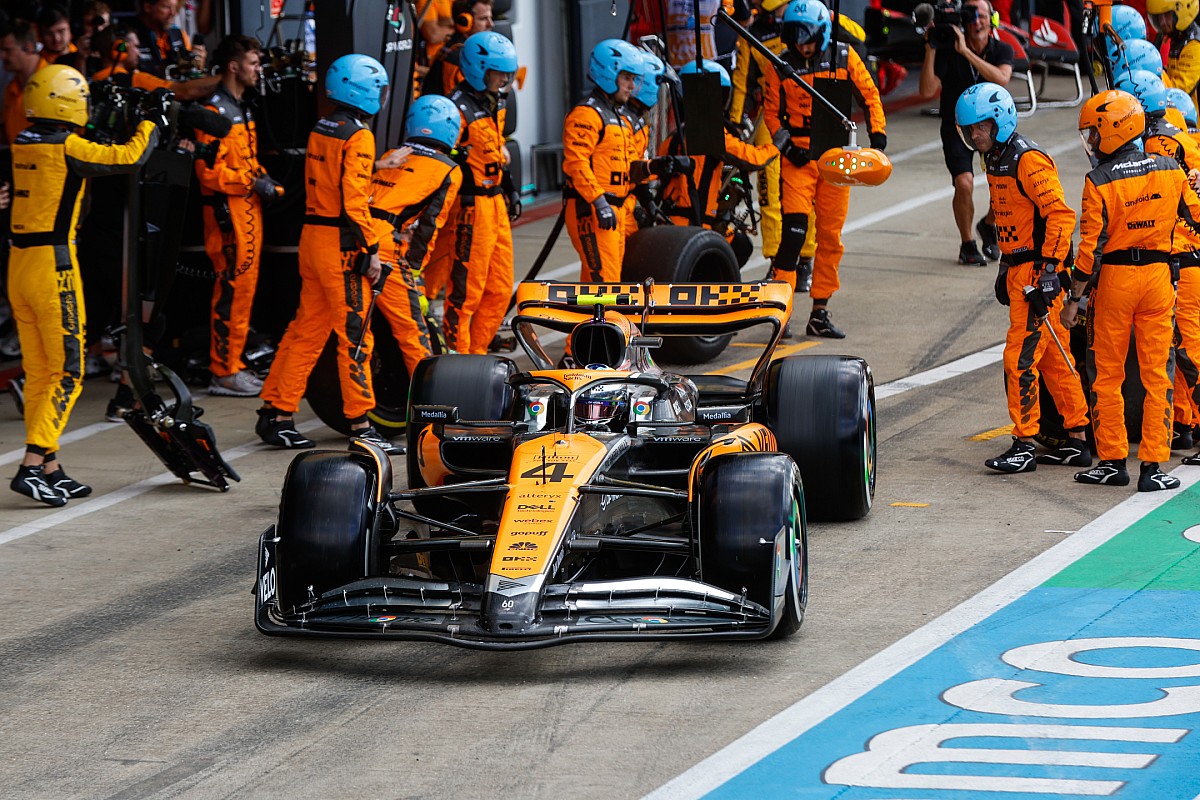- cross-posted to:
- [email protected]
- cross-posted to:
- [email protected]
There’s no easy way to read it without accepting tracking. Care to summarize the article?
A late caution period triggered by Kevin Magnussen’s stranded Haas initially brought out a virtual safety car, which prompted the leaders to head for the pits.
At the time, with second-placed Norris around nine seconds adrift of race leader Max Verstappen who seemed out of touch, McLaren felt that the safer option was to switch Norris to hards rather than take unnecessary risks and go on to used softs.
When race control switched the VSC to a full safety car period, the potential for Norris to fight Verstappen for the win suddenly emerged, as well as the requirement for him to protect his position at the restart. Those factors meant it made more sense to go for the softs.
But the timing of that safety car call, just as Norris came in to the pits with the hard tyres ready in position, came too late for McLaren to feel it was safe enough to switch to softs.
Speaking about the call to go on hards, with the cars around Norris all on softs, McLaren team principal Andrea Stella explained it was all down to timing.
“Under the virtual safety car, we were happy to go on hard tyres because it wouldn’t have been a problem in terms of warm up,” he said.
“But then the virtual safety car was converted into a safety car when we were pitting, and everything was [ready] at the pitstop to put hard tyres on. A last-minute change to soft would have been an operational problem.”
Ultimately, the biggest risk was of Norris arriving at the pitbox before the soft tyres were ready – which could have opened the door for other drivers to overtake him.
“If you have the pitstop crew ready with the hard tyres, and you make a call for soft tyres, it means that the guys that need to pick the tyres would have to rush there in the garage, remove the blankets, and bring the tyres back. It can create quite a bit of a situation, and it could have delayed the pitstop.”
While McLaren knew that the warm up on the hard would be more difficult than the soft, the high-speed nature of Silverstone meant that the difference between the two compounds was minimal compared to how it can be at other low energy circuits.
That is why it stuck to its guns in fitting the hards, rather than trying to execute a last-second change of plan.
“We thought that this is not one of those situations in which the hard tyres have a massive difference from a warm-up point of view to the soft,” Stella added.
“If you can manage the first four corners, and then you go through corner nine, you start to generate a decent amount of temperature. So we kept the decision simple.
“We didn’t want to change the allocation of tyres at the pitstop because this could have meant a significant delay. And, accepting that it could have cost us at the restart maybe one position, that was the most sensible thing to do.”
Was curious, so I just checked the replay, and it took just 40 seconds from the moment the safety car was called until the moment Norris drove into his pit box – even if the order for a switch to softs had been made immediately, that’s indeed not a lot of time, with a high chance of it going wrong. Glad Norris managed to hang on in second. Would Hamilton have had more chance on a pass by biding his time and being closer as soon as DRS was enabled? Or was passing Norris in the 1st lap (or 2nd) after the safety car his best bet after all?
Thank you for quoting the article.
I was wondering why McLaren stuck with the hards but that reasoning makes sense. Still not sure why they went with the hards in the first place though. The race was well over half finished and they could have completed it on softs. In the end I don’t think it changed anything but curious nonetheless.
I’m guessing one reason was that they had new hards available, but only scrub softs.
I wonder if they were concerned about their deg with softs since Silverstone is typically a high deg track. Maybe they didn’t do any long runs in FP and didn’t have the data to show that they could last 20+ laps.
Thanks mate!
Thanks do much!
They had hards ready, the safety car and thus the pit caught them only ready with the hards ready to go. They had hards in the first place because the high speed corners was limiting the difference in ties. IMO it didn’t make a difference negatively, and Hamilton was saying his softs were about done in the last laps.
deleted by creator
I’m very surprised they didn’t consider that a full safety car was likely, given the need for a support vehicle to enter the track to remove the stranded Haas.
I think McLaren got a bit lucky with that call tbh, but I’m happy that they did.
I’m not sure why they were so adamant on putting hard tires in the first place. Russell managed to drive about 30 laps on them with a full tank.








